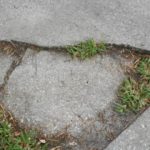Make Your Existing or Future Home a Greener Place to Live
THE RIGHT SITE
- A site with smart landscaping is important to help make your home comfortable, affordable and attractive.
- Water-efficient bermuda or buffalo grass is planted in sunny areas.
- Plants, shrubs and trees that grow successfully in Northern California.
- Gutters and downspouts direct water away from house.
- An irrigation system conserves water by using devices such as manual flow-control valves, a rain shut-off, and a timer with multiple start times.
THE RIGHT DESIGN
- Comfort and economy is possible when a house is designed for its site and climate.
- Minimal Solar Heat Gain:
- Longest walls face north and south.
- Most windows face north and south.
- Most windows are shaded on the outside by overhangs, covered porches, awnings, trees, trellises, or pergolas.
- Garage and least-used rooms are positioned on west side as buffers from the west sun.
- Maximum Ventilation:
- Most windows are operable and positioned for cross breezes.
- Most rooms have windows on two walls.
- High, centrally-located, operable windows enable hot air to move up and vent to the outside.
THE RIGHT EXTERIOR
Cool Shell and Attic:
- Light colored paint, siding, and roofing are used.
- A continuous vent strip runs underneath the roof overhang to let air into the attic.
- Roof ridge has a continuous strip of venting or several passive vents close to the ridge.
- Attic insulation does not block air flow path between roof overhang vents and ridge vents.
- Attic has a radiant barrier below the roof decking or between the rafters (looks like aluminum foil). Radiant barrier is especially effective when ductwork is in the attic.
Minimum Maintenance:
- Exterior wall material is low maintenance (brick, stone, stucco, cement board).
- Roof has forty-year life (metal or tile).
- Decks are made of materials that have at least a 10-year life (not solid wood).
Maximum Insulation:
- Insulation is at least 10 inches deep and evenly distributed
- Wall insulation is a type that fills every nook and cranny, such as wet-blown cellulose.
Optimal Windows:
- Unshaded windows have solar screens or low-e glass (except on the north side).
- Window frames are wood, vinyl or fiberglass.
THE RIGHT INTERIOR
Using the right materials can improve indoor air quality and increase comfort. Choosing energy efficient appliances will save you money.
Healthy Materials:
- Flooring is mostly a hard surface, such as concrete, tile or wood.
- Other flooring materials are natural wool, jute, sea grass, cork or true linoleum.
- No vinyl wallpaper is used in the home.
- Bath has exhaust fan vented to outside.
- Cook top has exhaust fan vented to outside.
- Laundry/utility room has exhaust fan vented to outside.
Efficient Appliances and Lights:
- Water heating has a 10-year warranty.
- An Energy Guide Label that indicates the appliance is in the top 25% of the efficiency scale.
- Exterior lights have light and motion detectors to conserve energy.
Efficient Heating and Cooling:
- Ceiling fans in all major rooms.
- Home has a whole-house fan to exhaust heat.
- Home has a programmable thermostat.
- Home has an A/C with a cooling efficiency is 12.0 SEER or higher.
Well-sealed Ducts:
- Ducts have been pressure-tested for leaks by a qualified technician. Remember, most houses lose about 25% of conditioned air due to leaky ducts. Leaks cause air quality and safety problems, too.
Air Filters:
- The filter is accessible and easy to change.
- The system has a 6″ wide filter cabinet with pleated-media or electronic filter (not electrostatic).
THE RIGHT ECONOMY
- Using local businesses and products keeps the local economy healthy, while reducing the affects of transportation on air quality.
- Regional materials of local artists and artisans are used for home items.
THE RIGHT LIFESTYLE
- The right location of your home improves your quality of life.
- The home is conveniently located for activities, such as work, school, entertainment, recreation, and public transportation.
- Traffic allows safe walking and biking.
 Speed up your home sale by preparing your home ahead of time using the following tips. Your home inspection will go smoother, with fewer concerns to delay closing.
Speed up your home sale by preparing your home ahead of time using the following tips. Your home inspection will go smoother, with fewer concerns to delay closing.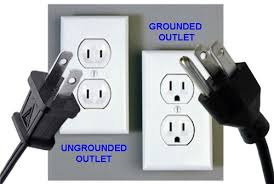 Home constructed prior to 1965 in the United States may still be equipped with the original style two pin ungrounded outlets. Ungrounded receptacles are less safe than modern grounded system three-pin receptacles. If current leaks to metal, unintended current paths in appliances, or the house systems, the energized component or appliance can increase the risk of electrical shock and fire. A grounded electrical system and receptacles provides increased protection against electric shocks, fire, and also decreases the risk of damage to appliances in case of a ground fault-current leaking outside the intended path.
Home constructed prior to 1965 in the United States may still be equipped with the original style two pin ungrounded outlets. Ungrounded receptacles are less safe than modern grounded system three-pin receptacles. If current leaks to metal, unintended current paths in appliances, or the house systems, the energized component or appliance can increase the risk of electrical shock and fire. A grounded electrical system and receptacles provides increased protection against electric shocks, fire, and also decreases the risk of damage to appliances in case of a ground fault-current leaking outside the intended path.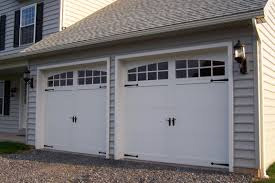 Garage vehicle doors are a large moving object and it is essential that they be well maintained and in good working condition. Regular maintenance of your garage doors not only extends the life of the garage door but also ensures reliable, quiet, and safe operation of the door. Many homeowners opt for regular inspection and maintenance of vehicle doors by a qualified professional due to their size and complexity. Here are some of the important steps that you can take to keep your garage doors in good working condition.
Garage vehicle doors are a large moving object and it is essential that they be well maintained and in good working condition. Regular maintenance of your garage doors not only extends the life of the garage door but also ensures reliable, quiet, and safe operation of the door. Many homeowners opt for regular inspection and maintenance of vehicle doors by a qualified professional due to their size and complexity. Here are some of the important steps that you can take to keep your garage doors in good working condition.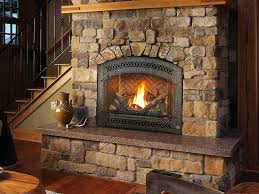 A fireplace can provide warmth to a room and can increase aesthetic appeal. Here are some tips to ensure that your fireplace remains in good working condition and keeps burning safety.
A fireplace can provide warmth to a room and can increase aesthetic appeal. Here are some tips to ensure that your fireplace remains in good working condition and keeps burning safety.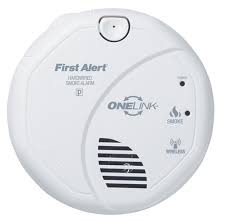 Smoke and carbon monoxide alarms are essential home safety equipment that help minimize the risk of smoke and poison gas to humans by alerting their presence. Here are some tips to ensure that your alarms remain in good working condition.
Smoke and carbon monoxide alarms are essential home safety equipment that help minimize the risk of smoke and poison gas to humans by alerting their presence. Here are some tips to ensure that your alarms remain in good working condition.